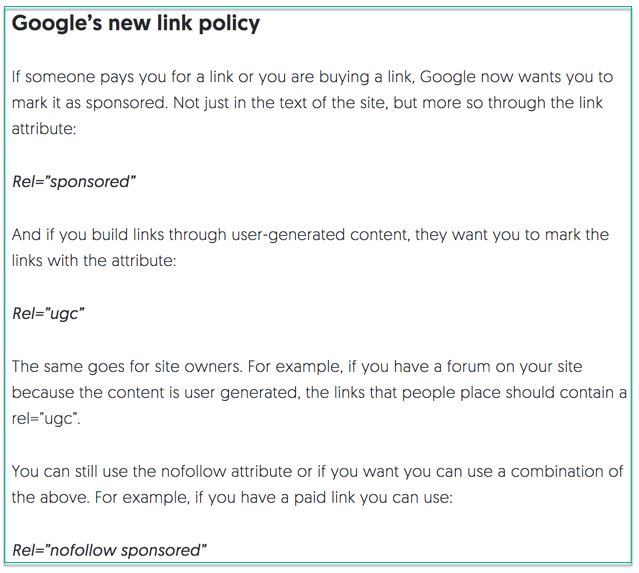Neil Patel Reviews Google’s New Link Building Guidelines
Neil Patel and SEO go together like peanut butter and jelly. Search for anything related to SEO, content marketing or affiliate marketing in Google… and you are sure to find one of Neil’s articles, companies or interviews ranking right at the top of the search results.
Millions of site owners, brands, and entrepreneurs end up on Neil’s site every month seeking his latest expertise and wisdom on everything from how to start a business, ranking higher in Google, or creating content on websites and social media that gets attention. It’s also not just his own site, but plenty of others where Neil Patel has been featured, cited as an expert, or even listed as a speaker or influencer to follow.
With all of this in mind, Google has recently been coming out with some changes and new site owner recommendations of their own – which Neil Patel also reviewed, documented and broken down into his own working protocol, making it easier for the rest of us to understand as well.
Let’s take a look at what’s making headlines in the world of SEO, what Neil has to say about it, and how I believe today’s marketers should adjust their activities accordingly.

The Landscape or SEO Today and How Google Looks at Links
Flash back a couple of decades ago to the days of Yahoo Search, Altavista and even Excite – everyone was trying to game the system and figure out how to rank their sites at the top of the search engines for big money keywords that would send them floods of traffic. Jump back to today, and nothing has really changed – except that pretty much all of the focus is on Google now, and Google has gotten better and better at out-gaming the games.
In 2019, Google pretty much controls the internet, making them the gatekeepers of information that people find when they search online. It’s been documented that there are hundreds of different data points, methods, factors and algorithms that go into determining where a given site’s pages rank for keywords – but for the most part, it’s usually a mixture of content quality and backlinks that have the most influence.
Neil Patel, for one, is of the belief that when done right, link building is more or less a future-proof SEO practice, and I’m inclined to agree. As he puts it in his review, “links will always be hard to come by, so they will be part of their algorithm for the foreseeable future.”
It’s just that compared to yesteryear, today there are also a ton of other factors that influence when, where and how a site ranks. Also, don’t forget to throw into the mix that there are now more than a billion active sites online, which are all competing for those same beloved search results.
Google Wants All Links Marked As What They Are
As Neil points out in his review of the latest SEO changes, the biggest adjustment that we need to know about today is Google requesting that everyone start labeling the type of links on their sites.
While this type of transparency is “good practice,” I’m predicting that it’s really not something you are going to come across on most websites. Unless, as Neil notes, “if Google starts placing some value on these user-generated links, it can help boost your rankings,” in which case there could be a bit of a gold rush.
Factor in that most site owners don’t want to put in the time and effort to label their links, and then another half of the internet (general bloggers) have no idea what SEO is or how to label links… often times it just seems like banter to throw something like this out there for the top SEO agencies and gurus to fight over.
And as for Neil Patel’s business interests… well, no matter what happens with Google and SEO in the future, he will be fine. As more site owners, bloggers, and brands continue to share his content on social media and publish reviews of the Neil Patel Digital agency, he will still have a virtually endless supply of traffic coming to his various media properties and presences from all directions.
You can see Neil’s breakdown of each of these new link policies and html “attributes” in the screenshot below.

Neil’s article also went into more details on what these link commands individually mean, and why Google even put them in place. Which was summed up by Google in the following:
All the link attributes — sponsored, UGC and nofollow — are treated as hints about which links to consider or exclude within Search. We’ll use these hints — along with other signals — as a way to better understand how to appropriately analyze and use links within our systems. – Google
With Google advancing their technology all the time, I wouldn’t be surprised if they had already collecting signals based on all of these html attributes in order to run ranking algorithm experiments that are already underway.
And at the same time, when you think about the “rel=sponsored” tag, you aren’t going to see many brands requesting this type of link on your site. Some of the largest brands in the world might, if they are running an obvious campaign through a large SEO or outreach company – but most of these brands want the SEO juice, and don’t want to be seen as buying “sponsored” links either.
In any event, if this is something you are currently freaking out about and trying to implement overnight, no worries. Google says this implementation won’t go into effect immediately, and site owners will have until March 1, 2020 to start setting the link attributes throughout their content.
“It will probably take another year before they really catch on,” says Neil, “which means for now you will just have to focus your efforts on dofollow links.”
Just Backlinks and Articles? Throw in Social Media as Well…
And regardless, as much as we would all like to think SEO and ranking in Google is just a matter of writing super high quality and long form content, along with getting as many quality links as possible… that’s no longer the case.
One thing that Neil does not point out in his article, in my opinion, social media is going to play an increasingly important role in all of this as well.
![]()
Without getting into too many technical specifics, Google loves social media, and they want to see more social shares, clicks coming from Facebook and Twitter back to your site, and also for content on your site to have social sharing buttons and embedded content as well.
After all, it’s all about user experience right?
You can even throw the case out there that “bounce rates” play a big role in the SEO process, and if you are going to run ads on social media to your existing audiences and fans… they would likely spend more time on your site than a random visitor, right?
These are all fine things to consider for now, but who knows when and how Google will change their perspective on these link factors in the future.
The Business of SEO and Where We Are Headed
In the world of SEO, all eyes are on Google. They are the king of search traffic – whether it’s desktop, tablet, or mobile browsing.
They are also the beginning and end of all decisions as to who ranks at the top of the search engine, and why.
This all helps the “business of SEO” as well. With such madness happening on a daily basis, and businesses of all sizes fighting for position, this just leads to more money being spent in an extremely competitive industry.
As I noted above, Neil and the enterprise companies that hire his agency will likely continue to see great rankings indefinitely. The bigger concern for everyone else, is the question of what will happen to your blog, business or brand if Google changes up their search algorithms and your site is no longer to be found?
The post Neil Patel Reviews Google’s New Link Building Guidelines appeared first on Zac Johnson.
Labels: Zac Johnson


0 Comments:
Post a Comment
Subscribe to Post Comments [Atom]
<< Home